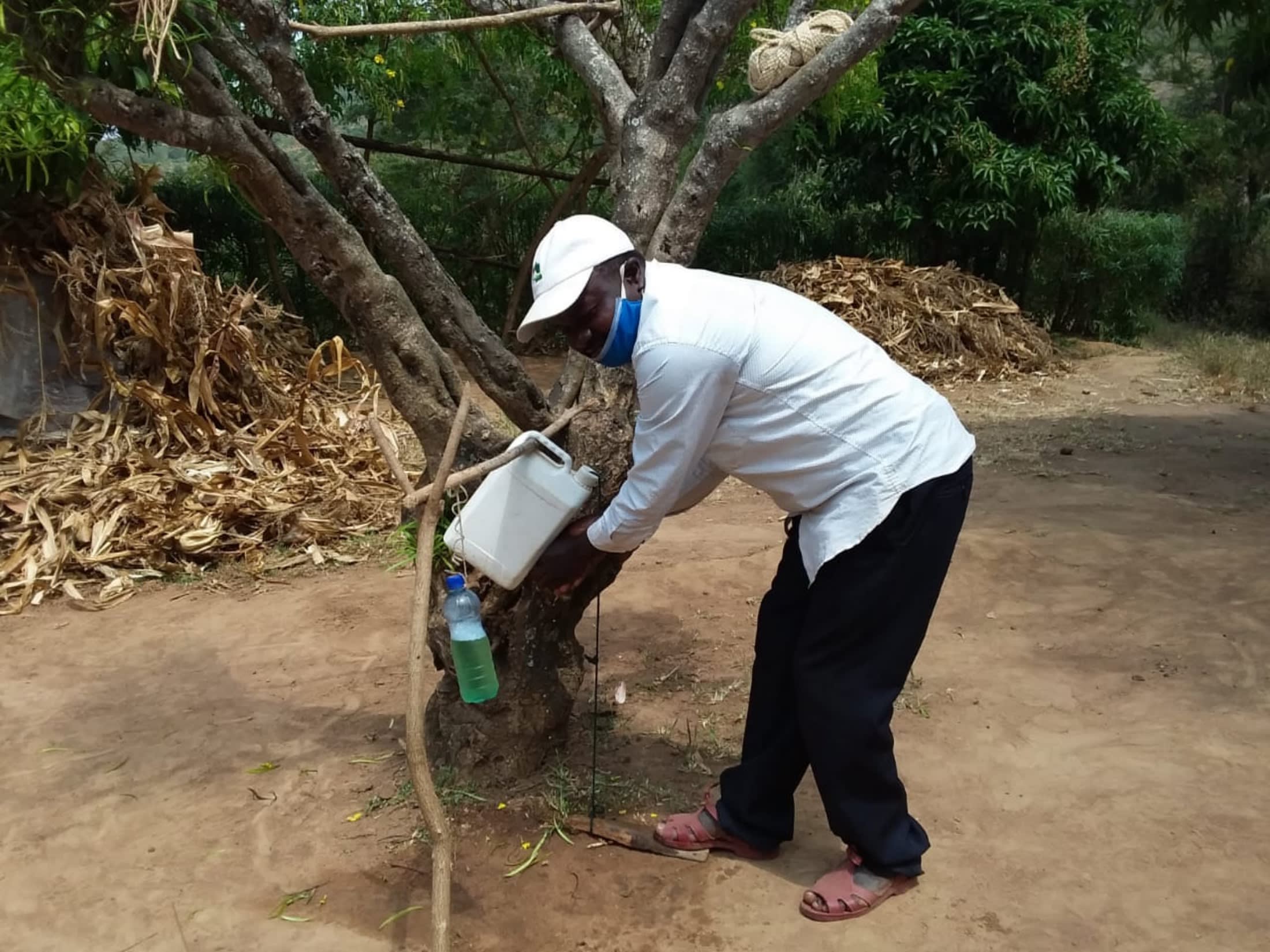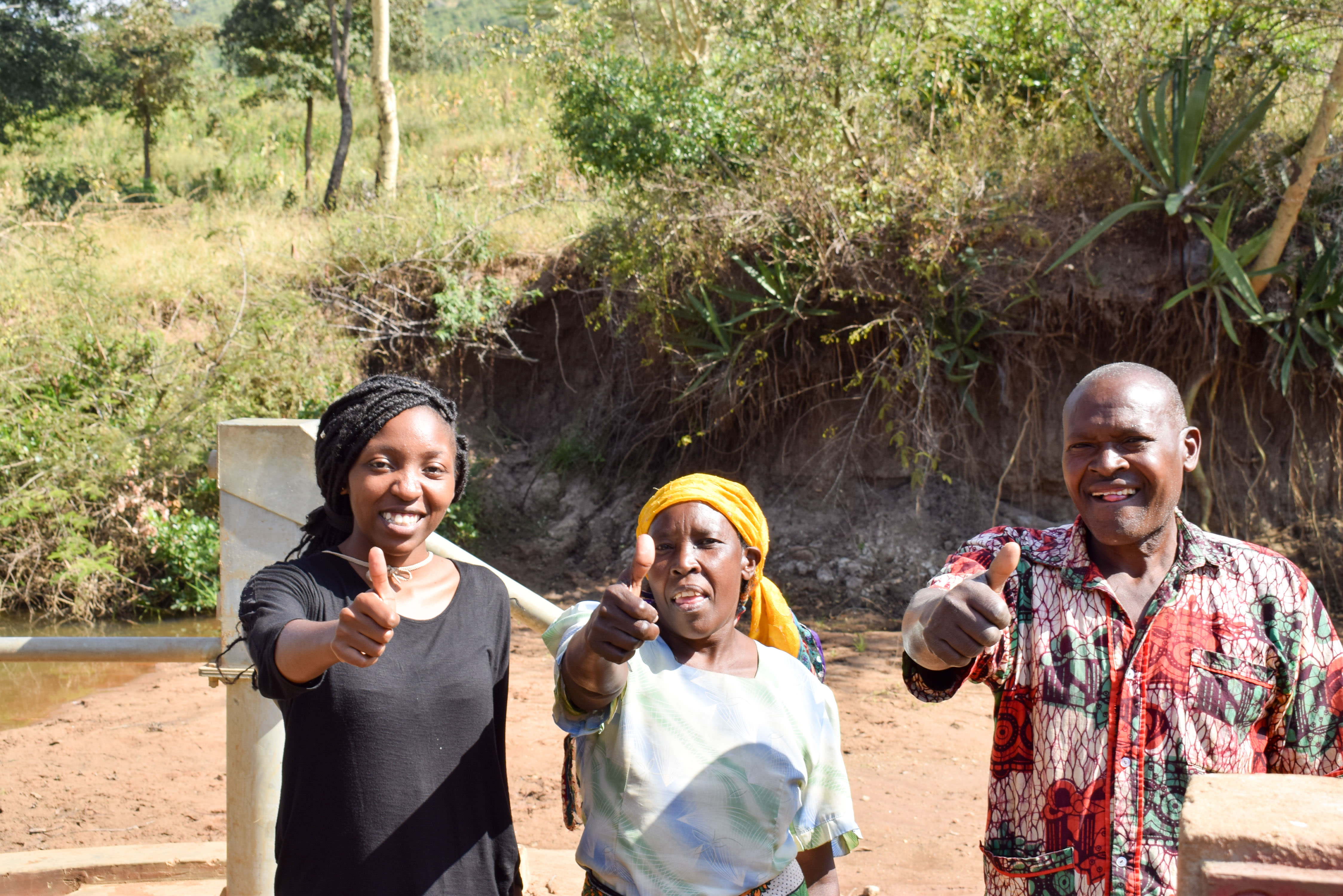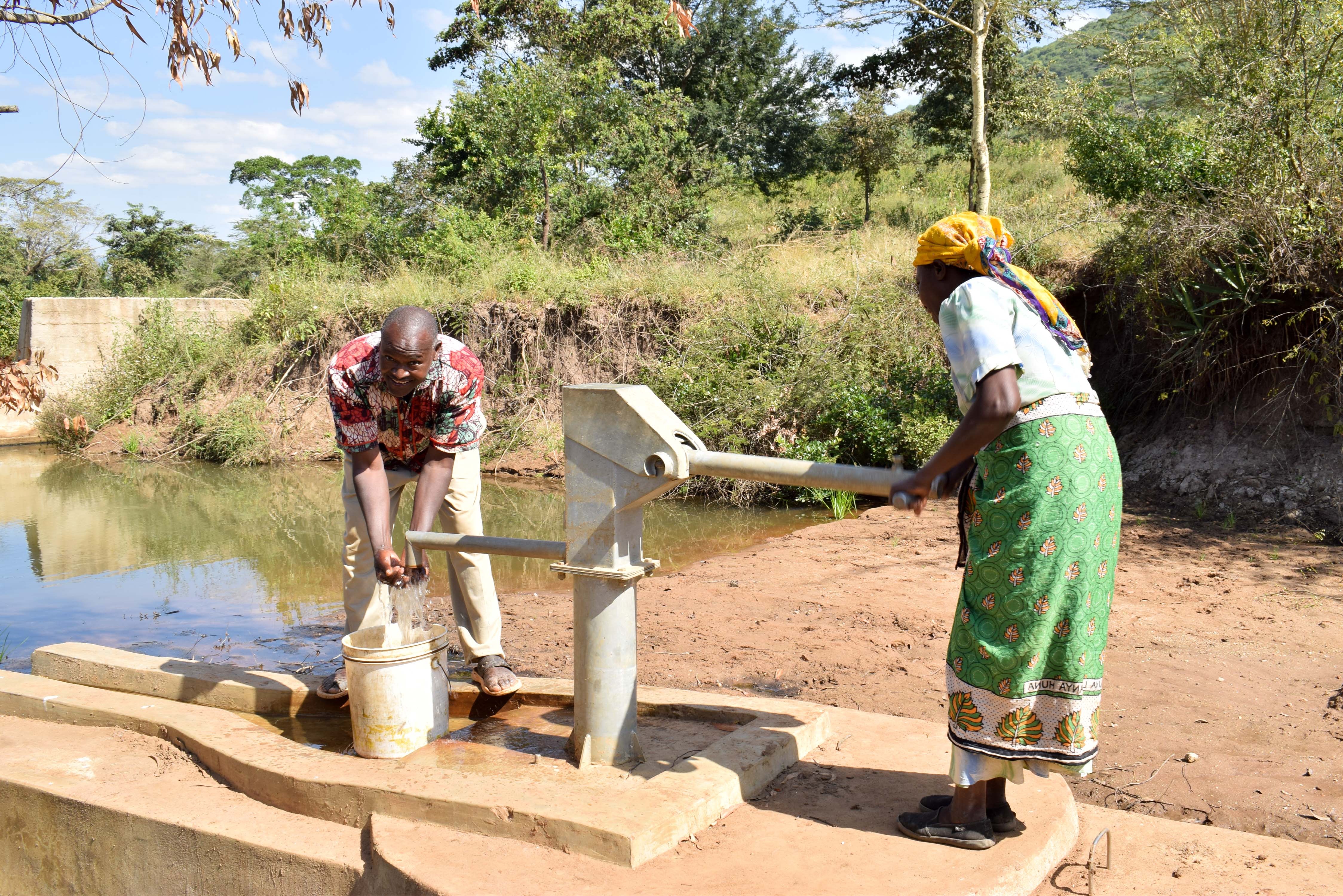Project Updates
August, 2020: Through Their Eyes: COVID-19 Chronicles with Sebastian Mumo
This post is part of a new series by The Water Project meant to highlight the perspectives and experiences of the people we serve and how the COVID-19 pandemic is impacting them. We invite you to read more of their stories here.
Our team recently visited Ilinge Community to conduct a COVID-19 prevention training (read more about it below!) and monitor their water point. Shortly after, we returned to check in on the community, offer a COVID-19 refresher training, and ask how the pandemic is affecting their lives.

It was during this most recent visit that Sebastian Mumo shared his story of how the coronavirus is impacting his life.
Field Officer Dorcas met Sebastian outside his home to conduct the interview. Both Dorcas and Sebastian observed physical distancing and other precautions throughout the visit to ensure their health and safety. The following is Sebastian's story, in his own words.
What is one thing that has changed in your community since the completion of the water project?
Water is life, and now with the sand dams and shallow wells in the community, community members' livelihoods have changed. We now plant vegetables for domestic use. Young men are making bricks the water in the sand dams. The rehabilitation of the areas was the sand dams had been constructed raising the water tables; hence water in the well is always available. We do not have to queue for long to get water. Our livestock also gets sufficient water improving their health.
How has having a clean water point helped you through the pandemic so far?
With clean water, there few cases of waterborne diseases because the water is clean and is assured that the health of my family is protected. We also have enough water to practice washing of hands.

Since the outbreak of COVID-19 in Kenya, has fetching water changed for you because of restrictions, new rules, or your concerns about the virus?
Yes, it has changed because now we have to follow government guidelines and make sure that at the different water sources, there are no many people and practice social distancing.
How has COVID-19 impacted your family?
I would, at times, do business to take care of my family, but that is now a challenge as the demand for the products I sell is low; therefore, low income and I have had to cut expenditure on buying household goods. My children are young, and now they can not go for preschool classes.

What other challenges are you experiencing due to the COVID-19 pandemic?
Meetings are restricted, affecting activities like table banking and merry go round gatherings that we attend. In the area, there are increase cases of petty theft because people do not have income.
What hygiene and sanitation steps have you and your community has taken to stop the spread of the virus?
My and family avoid crowded places and prefer staying home, we wear masks when we go out, and wash our hands with soap and water.
Like most governments around the world, the Kenyan government continues to set and adjust restrictions both nationally and regionally to help control the spread of the disease.

What restriction were you most excited to see lifted already?
The movement to Cities like Nairobi, the opening of worship places like churches
What restriction are you still looking forward to being lifted?
Opening of schools Allowing people with over 58 years old to go to church as most of them act as advisors
When asked where he receives information about COVID-19, Sebastian listed the radio, television, newspaper, loudspeaker/megaphone announcements, word of mouth, and our team's sensitization training.
What has been the most valuable part of the COVID-19 sensitization training you received from our team?
With the training, I was reminded of the importance of _wearing masks when I have visitors at home because one may not know their health status. We learned about the importance of eating healthy and continuing handwashing.

September, 2018: A Year Later: Ilinge Community Sand Dam
A year ago, generous donors helped construct a sand dam and hand-dug well for Ilinge Community in Kenya. The contributions of incredible monthly donors and others giving directly to The Water Promise allow teams to visit project sites throughout the year, strengthening relationships with communities and evaluating the water project over time. These consistent visits allow us to learn vital lessons and hear amazing stories. Read more...

December, 2017: Ilinge Community Sand Dam Complete
Ilinge Community, Kenya now has a new source of water thanks to your donation. A new sand dam has been constructed on a local river, which will build up sand to raise the water table and naturally filter water. Community members have also attended hygiene and sanitation review, and plan to share what they learned with their families and neighbors. You made it happen, now help keep the water flowing! Join our team of monthly donors and help us maintain this sand dam and many other projects.
The report below from our partner gives the latest details of the project. We also just updated the project page with new pictures, so make sure to check them out!
Project Result: House Visits
Earlier this year, Mwanyani Self-Help Group worked hard to finish a sand dam and well system, during which they met three days in a row for a hygiene and sanitation training. There, they learned about basic practices, behaviors, and tools they can use to improve their health. At the end of these sessions, members drafted and agreed to an action plan to implement everything they learned.
Since this first training was in March, we decided to make follow-up visits during the course of this project. 11 participant households were selected randomly to check for:
- water treatment
- hand-washing stations
- food handling habits
- latrines, dish racks, rubbish pits, and an animal shed
- personal hygiene practices
Through observation and interview, we found that:
- 91% of households are cleaned daily
- 91% have hand-washing stations with soap
- 46% have a dish rack
- 100% have latrines
- 100% treat their water before drinking
Training greatly impacted this group, with people adhering to most of the action plan. However there are still some gaps, so we plan to return for a review training soon.

Mr. Kilonzo Mutuku
Project Result: Seed Distribution
This project was implemented at a crucial time for self-help group members' farms. The ground near their older sand dams is fertile and ready for planting. ASDF distributed seeds for the members' group farm.

Group members received seeds to plan on their group farm.
Project Result: Sand Dam
The community members collected all of the local materials like rocks and sand that were required for successful completion of the dam. They also provided unskilled labor to support our artisans. Out of the entire process, collection of the raw construction materials takes longer than the actual construction. For a super large sand dam, material collection could take up to four months!
Before actual construction started, siting and technical designs were drawn and presented to the Water Resources Management Authority (WRMA) for approval. Once approved, we had to begin establishing firm bedrock at the base of the sand dam wall. In the absence of good bedrock, excavation is done up to a depth at which the technical team is satisfied that the ground is firm enough to stop seepage.

Excavation
Then mortar (a mixture of sand, cement and water) is mixed and heaped into the foundation. Once there is enough mortar to hold the rocks available, rocks are heaped into the mortar. Barbed wire and twisted bar is used to reinforce the mixture. Once the foundation is complete, a skeleton of timber is built to hold the sludge and rocks up above ground level. The process is then repeated until a sufficient height, width and length is built up. Then, the vertical timber beams are dismantled and the dam is left to cure.

The finished height is 5.6 meters and the length is 47 meters. As soon as it rains, the dam will begin to build up sand and store water. With this water, the surrounding landscape will become lush and fertile. However, it could take up to three years of rain (Because sometimes it only rains once a year!) for this huge sand dam to reach maximum capacity. Sand dam construction was simultaneous to construction of a hand-dug well which gives locals a safe method of drawing water. As the sand dam matures and stores more water, more of it will be accessible as drinking water from the well. To see that hand-dug well, click here.

Ann Nduku Mbuvi is a 46-year-old self-help group member and farmer. She is very happy about the new sand dam. "We will start growing vegetables as an income-generating activity for our group, and I will also personally grow vegetables for domestic use," she said.

October, 2017: Ilinge Community Sand Dam Underway
Ilinge Community in Kenya will soon be transformed by the construction of a sand dam. The dam will build up sand and eventually catch rainwater to help raise the water table in the area, providing clean water and helping with agriculture. The community will also attend hygiene and sanitation training to learn about practices that improve health. We just posted an initial report including information about the community, maps, and pictures. We’ll keep you posted as the work continues!

 Sand Dam
Sand Dam
 Rehabilitation Project
Rehabilitation Project

































